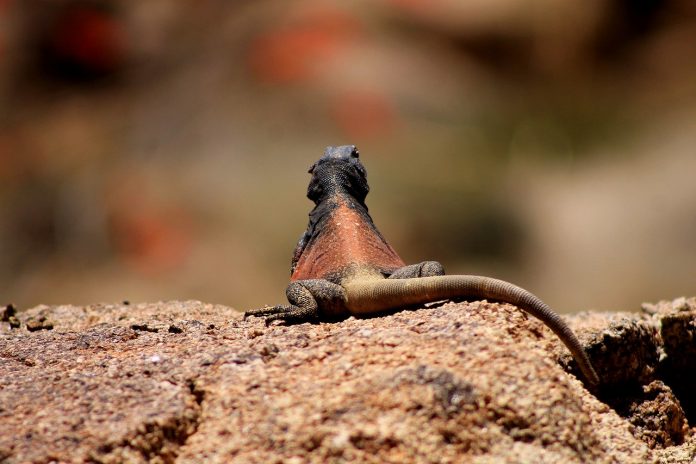Animal tales often occupy this space. As the year comes to an end, thoughts of animal ends also come to mind — their tails. So, here’s a tale of tails.
Animal tails are fascinating appendages that come in a variety of forms and serve a variety of functions. Tails help animals move, communicate, and stay warm. From lowly invertebrates to tropical monkeys, tails make survival possible for all that have them.
For example, crayfish possess a powerful, muscular tail that can be quickly flexed to propel them along the bottom of the waterways they call home. Without this speedy means of escape, few would elude the jaws of hungry predators.
No true tails
Insects lack true tails, but swallow-tailed butterflies and luna moths have tail-like projections that extend from their hind wings. Such “tails” may be part of a breeding display or perhaps they are simply an expendable target for predators to attack. The predator may get a bite of wing, but the insect’s body escapes real harm.
Aquatic vertebrates such as fish, seals, dolphins, and whales rely on their tails for locomotion. Helpless or at best awkward on land, many water-dwelling vertebrates are among nature’s most graceful creatures. Their powerful tails propel them through water at speeds only powerboats can match.
Life preservers
Many lizards carry tails that might best be described as “life preservers.” When attacked by predators, some lizards rely on vigilance, quickness, and break-away tails to stay alive. In pursuit from behind, predators usually reach out and grab a prey’s nearest body part.
Many lizards capitalize on this strategy. They simply lose the distal portion of the tail that predators often grab. The predator is left with a paltry morsel of squiggly lizard tail. The lizard escapes, albeit with an abbreviated tail. Such escapes come courtesy of tails equipped with a natural weak spot that snaps off when forcefully grabbed.
Turtle tails, on the other hand, are small and often fatty. Fat stored in turtle tails helps them survive hibernation during long cold winters.
Birds
Bird tails come in a variety of shapes and sizes and serve various functions. They act as both brake and rudder for birds in flight. A bird that loses all its tail feathers, for example, can still fly, but it loses a good bit of its agility and has a hard time slowing down and landing smoothly on a perch. Watch a hummingbird fan its tail while maneuvering around a nectar source to appreciate a tail’s contribution to aerial agility.
Tails serve birds in other ways, as well. Male turkeys, grouse, and peafowl fan theirs in elaborate displays to attract the attention of females. Similarly, scissor-tailed and fork-tailed flycatchers and many tropical hummingbirds show off their long flowing tails in aerial displays. And some members of the cuckoo family use their elongated tails to help them maintain their balance as they scamper along the branches of trees.
Mammals
Tail form and function peaks, however, among mammals. Opossums use their naked prehensile tails as a fifth leg to help support them as they climb trees. A handful of New World monkeys use their prehensile tails to move quickly and safely through treetops. Coyotes, foxes, and squirrels curl themselves inside their long bushy tails to stay warm on cold winter nights. Flying squirrels glide from tree to tree by using their flat tails as rudders.
When danger threatens, beavers slap their flat, scaly tails on the water’s surface as a warning to other beavers. On hot summer days horses swat flies with their broom-like tails. And white-tailed deer and cottontail rabbits flash their white tails like flags when fleeing danger.
Wolves use their tails to stay warm, but they also use their tails to communicate. A tail held above the plane of the back is a threat. A tail between the legs indicates submission. A loosely wagging tail communicates goodwill; a tight wag suggests aggression.
And who has never seen video footage of a cheetah chasing prey across the African savannah? Its long tail helps balance its entire body as it twists and turns at speeds up to 70 mph.
Though often underappreciated, tails are essential components of many animals’ anatomy that enable them to survive from one year into the next.













